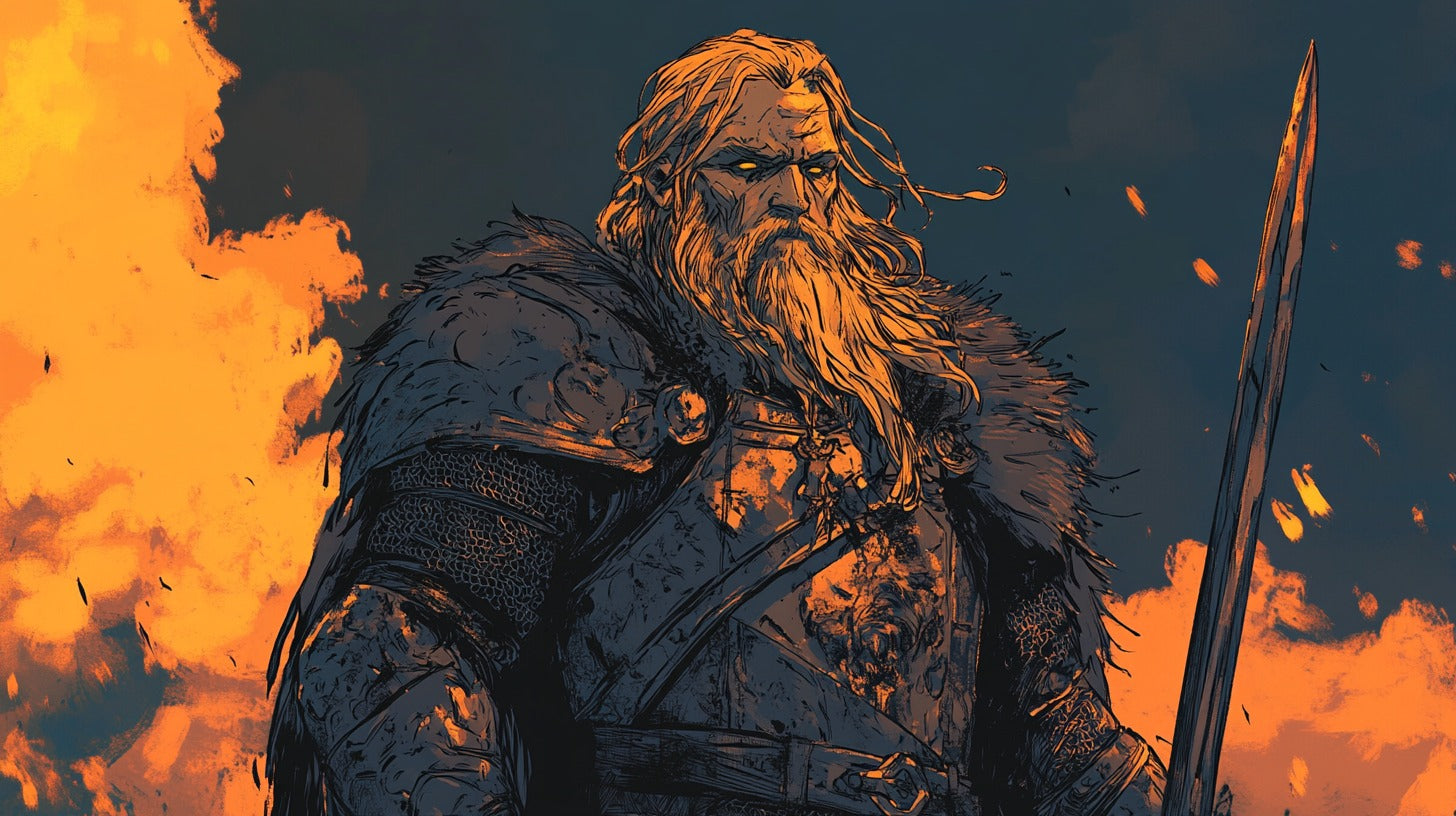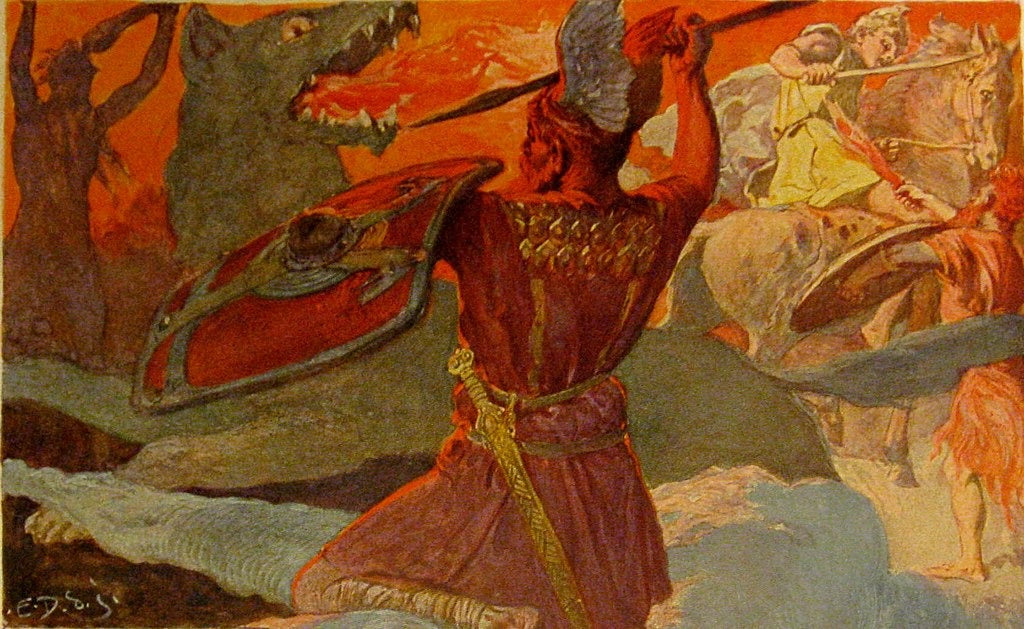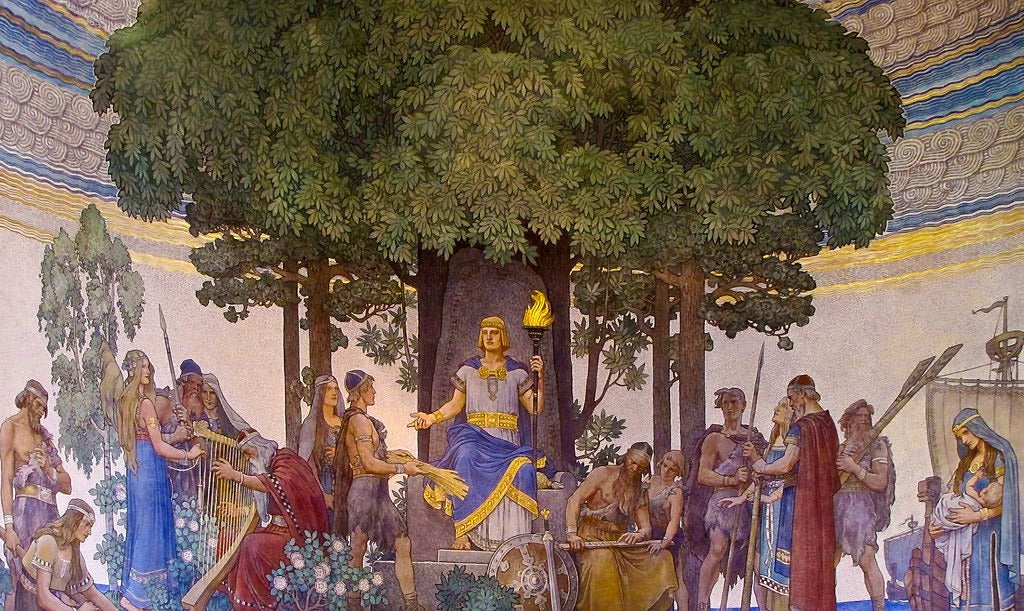
Tyr: Ancient Norse God of Law, Justice, and Honor
Tyr (Old Norse: Týr) stands as one of the most significant yet enigmatic deities in Norse mythology, representing law, justice, and honor in the Norse pantheon. While often overshadowed in modern popular culture by gods like Odin and Thor, historical evidence suggests Tyr's worship was once widespread across Germanic-speaking regions, with his influence extending from the Migration Period through the Viking Age.
Etymology and Historical Origins
The name Týr derives from Proto-Germanic *Tīwaz, ultimately stemming from Proto-Indo-European *deywós, meaning "god" or "divine one." This etymological connection places Tyr among the oldest of Germanic deities, with linguistic evidence suggesting he may have once held a position as the chief deity of the Proto-Germanic pantheon, similar to Zeus in Greek mythology.
Archaeological evidence from the 3rd century CE demonstrates that Roman soldiers of Germanic origin equated Tyr with Mars, as evidenced by votive inscriptions found along Hadrian's Wall. The equation appears in the interpretatio romana, where Latin writers attempted to understand Germanic deities through the lens of their own pantheon.
Role in Norse Mythology

Tyr and Fenrir - Norse Mythology Tyr's Rune Pendant
Primary Functions and Attributes
Tyr's primary role in Norse mythology centers on upholding law, justice, and proper order. Unlike other war gods who embodied the brutal aspects of combat, Tyr represented the judicial aspects of warfare and the concept of justified conflict. His association with the thing (assembly) and legal proceedings suggests a deep connection to societal order and governance.
Relationship with Other Gods
Within the Æsir, Tyr occupied a unique position. While sources like the Prose Edda describe him as Odin's son, older traditions suggest he may have preceded Odin in importance. His interactions with other gods were characterized by wisdom and measured judgment, though detailed accounts of these relationships are surprisingly limited in surviving sources.
The Binding of Fenrir

Týr sacrifices his arm to Fenrir in an illustration by John Bauer, 1911.
The Sacrifice of Tyr's Hand
The most famous myth involving Tyr recounts his role in the binding of Fenrir, the monstrous wolf prophesied to kill Odin during Ragnarök. When the gods sought to chain Fenrir with the unbreakable fetter Gleipnir, the wolf refused unless one of the gods placed their hand in his mouth as a pledge of good faith. Only Tyr stepped forward, knowing he would lose his hand when the gods proved treacherous.
Symbolic Significance
This act of self-sacrifice carries profound symbolic meaning, representing the price of maintaining cosmic order and justice. The loss of Tyr's right hand—his sword hand—demonstrates that sometimes upholding the law requires personal sacrifice, a theme that resonates throughout Norse mythology.
Archaeological Evidence and Historical Records

An illustration (by Gunnar Creutz) of a bracteate found in Trollhättan, Västergötland, Sweden, depicting Tyr and Fenrir.
Runic Inscriptions
The Tiwaz rune (ᛏ), named after Tyr, appears in numerous inscriptions across Scandinavia and Germanic territories. The rune's use in protective charms and legal contexts reinforces Tyr's association with law and justice. Notable examples include the Negau helmet inscription (circa 2nd century BCE) and various Migration Period bracteates.
Place Names and Cultural Impact
Toponymic evidence reveals Tyr's widespread influence, with places like Tislund ("Tyr's Grove") in Denmark and Tuesday (Old English Tiwesdæg) preserving his name. These geographical markers help reconstruct the extent of his worship across Germanic territories.
Religious Practices and Worship

Tiwaz Rune Norse Viking Shield Ring
Cult Centres and Temples
Archaeological evidence suggests dedicated cult centers to Tyr existed throughout Scandinavia, though fewer than those dedicated to Odin or Thor. The Uppsala temple in Sweden, described by Adam of Bremen, may have included worship of Tyr alongside other deities, though explicit confirmation remains elusive.
Ritual Practices
Historical sources indicate that legal oaths were often sworn on a ring dedicated to Tyr, demonstrating his importance in judicial proceedings. The practice of sacrificing weapons and military equipment at sacred sites may also have been associated with Tyr's worship, though direct evidence remains limited.
Legacy and Modern Interpretations
Tyr's influence extends beyond the medieval period, inspiring modern interpretations in literature, art, and popular culture. His embodiment of justice and self-sacrifice continues to resonate, particularly in discussions of law, honor, and moral courage. Modern paganism and reconstructionist movements have renewed interest in Tyr's worship, though interpretations vary significantly.
Frequently Asked Questions (FAQs)
- Was Tyr always one-handed in Norse mythology?
No, he sacrificed his hand specifically during the binding of Fenrir, making it a defining moment in his mythology rather than an inherent characteristic.
- Why is Tyr associated with Mars by Roman writers?
Roman authors equated Tyr with Mars due to their shared associations with warfare, though Tyr's connection to law and justice distinguished him from Mars's more militant aspects.
- What evidence exists for Tyr's worship?
Archaeological evidence includes runic inscriptions, place names, and votive offerings, though direct archaeological evidence of temples is limited.
- Did Tyr have any children in Norse mythology?
Surviving sources do not mention any children of Tyr, though this may be due to the fragmentary nature of Norse mythological texts.
- Why did Tyr's importance seem to diminish over time?
Scholars suggest his role may have been gradually superseded by Odin during the late Iron Age, though the exact reasons remain debated.
References
Turville-Petre, E.O.G. (1964). Myth and Religion of the North: The Religion of Ancient Scandinavia. London: Weidenfeld and Nicolson.
de Vries, Jan (1962). Altnordisches Etymologisches Wörterbuch. Leiden: Brill.
Simek, Rudolf (1993). Dictionary of Northern Mythology. Cambridge: D. S. Brewer.
Price, Neil (2020). Children of Ash and Elm: A History of the Vikings. Basic Books.
Orchard, Andy (1997). Dictionary of Norse Myth and Legend. Cassell.








